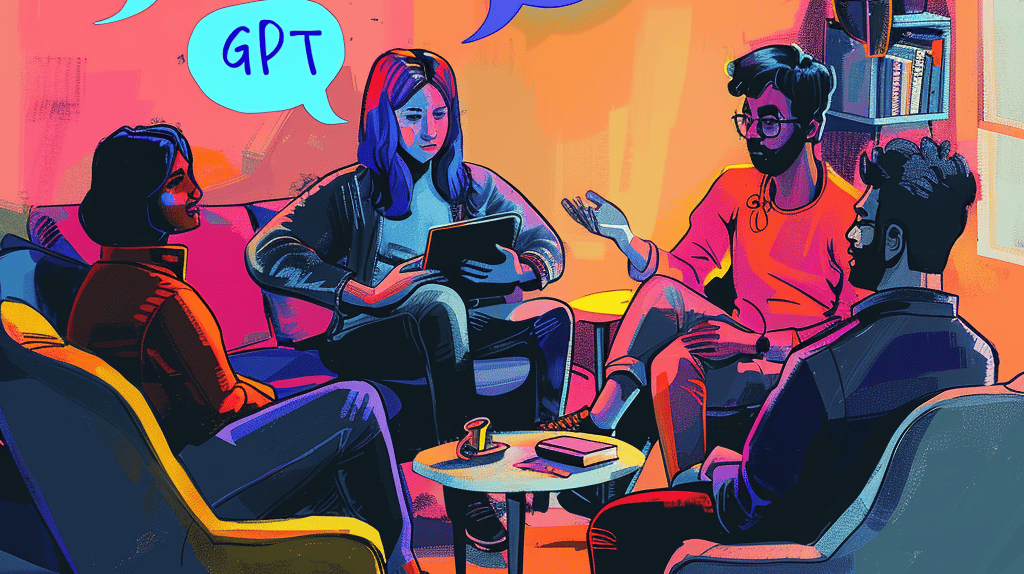Introducing GPT-4o: OpenAI's Omnimodal Marvel
After a year of anticipation, OpenAI has unveiled the latest addition to their transformer family, GPT-4o ("omnimodal"). This new model is not only a significant leap in AI technology but also a paradigm shift in how we interact with AI across multiple modalities. Here’s everything you need to know about this groundbreaking release.
5/21/20243 min read


After a year of anticipation, OpenAI has unveiled the latest addition to their transformer family, GPT-4o ("omnimodal"). This new model is not only a significant leap in AI technology but also a paradigm shift in how we interact with AI across multiple modalities. Here’s everything you need to know about this groundbreaking release.
The Speed and Versatility of GPT-4o
GPT-4o is remarkably fast and efficient in processing text, audio, images, and video, including image generation. It shows significant improvements in coding and multimodal reasoning, and it introduces new capabilities like 3D rendering. According to lmsys.org’s chatbot arena, GPT-4o has already earned the title of the best all-around model based on results from its proxy model, the renowned gpt2-chatbot.
However, the release of GPT-4o is not just about technological advancements. As Sam Altman of OpenAI puts it, the goal is to put state-of-the-art AI in the hands of billions for free, moving beyond merely pushing the veil of ignorance forward.
The Curse of Multimodality
Multimodal Large Language Models (MLLMs) have been around for a while, but GPT-4o is the first to natively handle four distinct modalities: audio, video, images, and text. Previous models like Gemini 1.5 and GPT-4V offered multimodal capabilities but relied on integrating distinct models such as Whisper and DALL-E 3. GPT-4o, in contrast, is a single model that natively processes and generates text, images, audio, and video (excluding video generation), enabling true cross-modal reasoning.
Multimodal In, Multimodal Out
Traditional Large Language Models (LLMs) are sequence-to-sequence models, typically processing text inputs and generating text outputs. When combined with image encoders, they can process images, but these components are often exogenous and do not allow for true cross-modal reasoning. GPT-4o changes this by including all components necessary to process and generate across multiple modalities within a single model.
As Mira Murati highlighted, speech includes more than just words. Tone, emotion, pauses, and other cues add depth to communication. Previous models only received transcriptions, missing these cues. GPT-4o, however, processes speech in its entirety, enabling it to understand context and emotions better.
An All-Around Beast
Despite a short 30-minute presentation, the capabilities of GPT-4o showcased its potential to transform ChatGPT from a product used by millions to one used by billions.
Real-Time Video Recognition: GPT-4o performs real-time video recognition, surpassing previous models like Google’s Gemini.
Human-Level Latency: The model executes real-time translation with minimal latency, thanks to processing everything within a single model.
Educational Applications: GPT-4o can act as a patient AI tutor, helping students with complex tasks.
Memory and Focus: The model can recall previous interactions and focus on relevant tasks, improving efficiency and reducing latency.
More Intelligent, But Not AGI
While GPT-4o excels in many areas, it is not a step towards Artificial General Intelligence (AGI). It represents an incremental improvement over GPT-4 in terms of intelligence. However, it outperforms other models in benchmarks, particularly in coding, where it has shown a 100 ELO point improvement.
OpenAI also announced a desktop app for ChatGPT, providing full-screen access to the model for tasks like debugging. Additionally, the model now supports up to 97% of the global population with improved tokenization for non-English languages, making it faster and more efficient.
OpenAI’s True Intentions
The release of GPT-4o seems to serve three main purposes:
Buying Time for GPT-5: The next major leap in AI is on the horizon, and GPT-4o helps bridge the gap.
Competing with Google: By releasing GPT-4o ahead of Google’s I/O conference, OpenAI sets high expectations for its competitor.
Winning Apple: OpenAI is positioning GPT-4o as a potential upgrade for Siri, demonstrating capabilities that could tempt Apple to partner with them.
About PandoraBot.io
With AI, small businesses are rethinking their approaches to customer experience, productivity, revenue, and growth in both the B2B and the B2C domains. AI technology, once a distant dream for smaller businesses, is now within reach.PandoraBot.io is at the forefront of this revolution, providing powerful AI bots that offer the functionalities of an employee at a fraction of the cost.
Meet our Quartet of Battle-Tested AI Chatbots! Schedule a quick demo with our team today!
🧠 KnowledgeBot: This bot acts as a central repository of knowledge, enabling quick retrieval and dissemination of information across team members from 1000s of Documents & unstructured data. It provides immediate Access to Company-Wide Knowledge and instant answers to complex queries for technicians or sales people on the field.
💰 SalesBot: Imagine having a skilled salesperson working tirelessly 24/7. Our SalesBot does exactly that, recommending products to customers, enhancing sales, and boosting cross-sell opportunities. AI can transform online chat sessions into something more real — known as “conversational commerce” , boosting personalisation, content creation, and sales productivity
🛠️ ServiceBot: Offering round-the-clock customer service. The ServiceBot streamlines processes from order tracking to client information gathering. It handles service queries efficiently, integrates with the ERP and powers customer portals, order tracking, ensuring a seamless service experience.
️️ 👁️🗨️ VisionBot: Advanced product search with image recognition: Automate inventory management with image-based AI, Implement quality controlsUsers can provide images instead of text to search for products, report problems, or communicate with customer service, creating an unparalleled level of convenience and personalisation.
